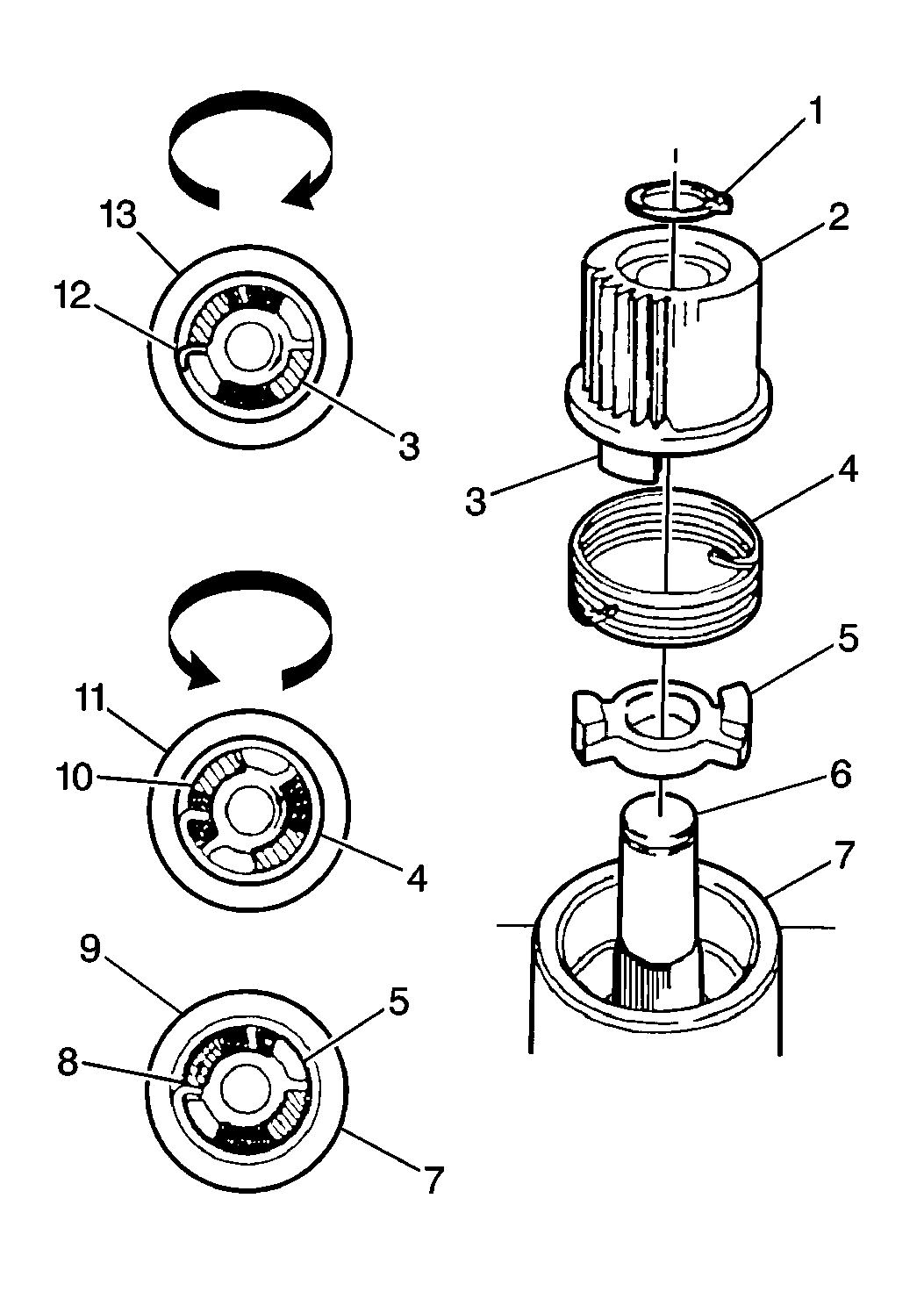Base Brake System
The brake systems use conventional braking under normal operating conditions.
The following components are necessary for operation of conventional braking:
| • | The compact master cylinder |
ABS Modulator Fluid Flow
Each front channel consists of the following components:
The following conditions exist under normal operating conditions (base
brakes):
| • | The piston remains in the highest (home) position. |
| • | The solenoid remains open (not energized). |
The following actions permit the above conditions to exist:
| • | The motor turns the ball screw upward, which then drives the nut
upward. |
| • | The Expansion Spring Brake (ESB) holds the piston at the upmost
position. |
Antilock Brake System (ABS)
The ABS VI improves the controllability and the steerability of a vehicle
during braking. The ABS VI improves the controllability and steerability by
controlling the hydraulic pressure that applies to each wheel brake.
Antilock braking occurs when the following conditions exist:
| • | The brake switch closes. |
| • | A microprocessor (which is located in the EBCM) determines that
one or more of the wheels is about to lose traction during braking. |
When the above conditions exist, the EBCM allows the ABS brake modulator
to change the brake pressure several times per second.
The above action causes the following conditions:
| • | The wheels cannot lock. |
| • | The driver has maximum vehicle control. |
The ABS VI cannot perform the following actions:
| • | Increase the brake pressure above the master cylinder pressure
that the driver applies |
| • | Apply the brakes by itself |
The ABS VI provides the following conditions:
| • | Greatly improved braking that enables the driver to maintain steerabilty
and to bring the vehicle to a controlled stop. |
| • | Effective braking and directional control over a wide range of
road surfaces and braking conditions. |
If any wheel(s) begin to approach lock-up, the EBCM will control the
following components in order to control the brake pressure to the affected
wheel(s):
During front wheel ABS operation, the solenoids turn on in order to
isolate the brake pressure to the affected wheel(s).
The EBCM then provides controlled current to the motors in order to
regulate the following items:
The following actions occur when the EBCM provides controlled current:
| • | As the motors move backward, the piston follows the nut downward. |
| | The above condition permits seating of the check valve. |
| | The brake pressure to the wheel becomes a function of the controlled
volume within the piston chamber. |
| • | The motor drives the nut further downward in order to reduce brake
pressure. |
| • | The motor drives the nut and the piston upward in order to reapply
or increase pressure. |
If ABS was entered during low brake pressure (such as on ice) and a
dry surface is encountered during the reapply action, the piston drives all
of the way to the top. Driving the piston to the top position causes the
following conditions:
| • | The check valve unseats. |
| • | The system returns to base brakes. |
| | Base brakes will be used until the brake pressure is high enough to
cause the wheel to approach lock-up again. Then the ABS cycle will start again. |
| | The above process may occur in less than one second if the driver presses
firmly on the brake pedal. |
The total brake pressure during ABS must not exceed the brake pressure
that was present when ABS was entered.
Reduced pressure on the brake pedal may cause the wheel brake pressure
to exceed the brake pressure at the master cylinder. The following actions
result when the above condition occurs:
| • | The check valve unseats |
| • | A small amount of brake fluid is returns to the master cylinder. |
The ABS VI cannot increase the brake pressure above the master cylinder
pressure that the driver applies.
The ABS VI cannot apply the brakes by itself.
The following actions occur when the ABS is no longer required:
| • | The pistons return to their upmost (home) position. |
| • | The ESBs hold the pistons in place. |
| • | The solenoids on the front channels simultaneously open. Simultaneous
opening of the solenoids provides a redundant braking path. |
The operation of the rear channel is similar to operation of the front
channels except for the following actions that exist in the rear channel:
| • | The same motor controls the pressure of both rear brakes. |
| • | The rear brake pressures are controlled together. |
| | If either of the rear wheels begins to lock, brake pressure to both
wheels reduces. Reduced brake pressure maximizes vehicle stability. |
No rear solenoid exists. The front brakes perform most of the braking.
If an ABS failure that affects the operation of the rear base brake
occurs, the following actions will occur:
| • | A diagnostic trouble code will store. |
| • | The EBCM will turn on the ABS warning indicator. |
ESB Operation


